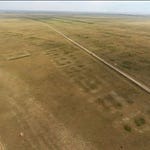A Fossil That Refused To Collapse
Deep inside Lamalunga Cave in southern Italy, a human ancestor has been locked in place for more than 130,000 years. Calcite crusts cling to his bones like barnacles, sealing the skeleton into the limestone wall. The effect is startling. Most Pleistocene remains arrive to science in pieces, scattered or compressed or missing altogether. Altamura Man, by contrast, looks as if time granted him a shelter in exchange for immobility.
His discovery in the early 1990s sparked excitement, but his fragility made him nearly impossible to study. No lab could accept him, no saw could free him. For decades, researchers wondered what secrets might lie inside the face pressed into the cavern wall.

Now they know. In a study published in PNAS,1 Costantino Buzi and colleagues did what no paleoanthropologist had managed before: they looked inside a Neanderthal’s nose. With endoscopic cameras threaded carefully through the narrow cave passages, they reconstructed the internal anatomy of the nasal cavity in unprecedented detail.

What they found overturned one of the most persistent stories in human evolution.
“Neanderthal faces have been interpreted through the lens of climate for so long that alternative explanations were rarely given room to breathe,” says Dr. Elisa Montalbán, a paleoanthropologist at the University of Barcelona. “The Altamura specimen finally provides direct evidence that challenges those climatic assumptions.”
Listen to this episode with a 7-day free trial
Subscribe to Anthropology.net to listen to this post and get 7 days of free access to the full post archives.








